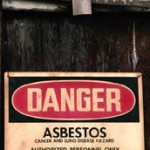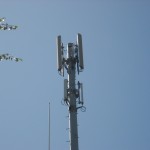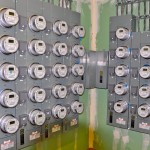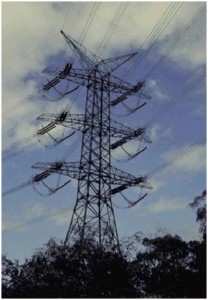
PACE calls on governments to ‘take all reasonable measures’ to reduce exposure to electromagnetic fields
May 27, 2011
The Parliamentary Assembly of the Council of Europe (PACE), meeting in Kyiv at Standing Committee level, today called on European governments to “take all reasonable measures” to reduce exposure to electromagnetic fields, especially to radio frequencies from mobile phones, “and particularly the exposure to children and young people who seem to be most at risk from head tumours”.
According to parliamentarians, governments should “for children in general, and particularly in schools and classrooms, give preference to wired Internet connections, and strictly regulate the use of mobile phones by schoolchildren on school premises”, and put in place information and awareness-raising campaigns on the risks of potentially harmful long-term biological effects on the environment and on human health, especially “targeting children, teenagers and young people of reproductive age”.
Following the proposals of the rapporteur (Jean Huss, Luxembourg, SOC), the Assembly called on governments to provide information on potential health risks of DECT-type wireless telephones, baby monitors and other domestic appliances which emit continuous pulse waves, if all electrical equipment is left permanently on standby. They should, instead, recommend “the use of wired, fixed telephones at home or, failing that, models which do not permanently emit pulse waves”.
Governments should “reconsider the scientific basis for the present electromagnetic fields exposure standards set by the International Commission on Non-Ionising Radiation Protection, “which have serious limitations” and apply as low as reasonably achievable (ALARA) principles.
The adopted resolution underlines the fact that “the precautionary principle should be applicable when scientific evaluation does not allow the risk to be determined with sufficient certainty” and stresses that “the issue of independence and credibility of scientific expertise is crucial” to achieve a transparent and balanced assessment of potential negative impacts on the environment and human health.
The potential dangers of electromagnetic fields and their effect on the environment
Resolution 1815 (2011)1
Parliamentary Assembly, Council of Europe
1. The Parliamentary Assembly has repeatedly stressed the importance of states’ commitment to preserving the environment and environmental health, as set out in many charters, conventions, declarations and protocols since the United Nations Conference on the Human Environment and the Stockholm Declaration (Stockholm, 1972). The Assembly refers to its past work in this field, namely Recommendation 1863 (2009) on environment and health, Recommendation 1947 (2010) on noise and light pollution, and more generally, Recommendation 1885 (2009) on drafting an additional protocol to the European Convention on Human Rights concerning the right to a healthy environment and Recommendation 1430 (1999) on access to information, public participation in environmental decision-making and access to justice – implementation of the Aarhus Convention.
2. The potential health effects of the very low frequency of electromagnetic fields surrounding power lines and electrical devices are the subject of ongoing research and a significant amount of public debate. According to the World Health Organisation, electromagnetic fields of all frequencies represent one of the most common and fastest growing environmental influences, about which anxiety and speculation are spreading. All populations are now exposed to varying degrees of to electromagnetic fields, the levels of which will continue to increase as technology advances.
3. Mobile telephony has become commonplace around the world. This wireless technology relies upon an extensive network of fixed antennas, or base stations, relaying information with radio frequency signals. Over 1.4 million base stations exist worldwide and the number is increasing significantly with the introduction of third generation technology. Other wireless networks that allow high-speed internet access and services, such as wireless local area networks, are also increasingly common in homes, offices and many public areas (airports, schools, residential and urban areas). As the number of base stations and local wireless networks increases, so does the radio frequency exposure of the population.
4. While electrical and electromagnetic fields in certain frequency bands have wholly beneficial effects which are applied in medicine, other non-ionising frequencies, be they sourced from extremely low frequencies, power lines or certain high frequency waves used in the fields of radar, telecommunications and mobile telephony, appear to have more or less potentially harmful, non-thermal, biological effects on plants, insects and animals as well as the human body even when exposed to levels that are below the official threshold values.
5. As regards standards or threshold values for emissions of electromagnetic fields of all types and frequencies, the Assembly recommends that the ALARA or “as low as reasonably achievable” principle is applied, covering both the so-called thermal effects and the athermic or biological effects of electromagnetic emissions or radiation. Moreover, the precautionary principle should be applicable when scientific evaluation does not allow the risk to be determined with sufficient certainty, especially given the context of growing exposure of the population, including particularly vulnerable groups such as young people and children, which could lead to extremely high human and economic costs of inaction if early warnings are neglected.
6. The Assembly regrets that, despite calls for the respect of the precautionary principle and despite all the recommendations, declarations and a number of statutory and legislative advances, there is still a lack of reaction to known or emerging environmental and health risks and virtually systematic delays in adopting and implementing effective preventive measures. Waiting for high levels of scientific and clinical proof before taking action to prevent well-known risks can lead to very high health and economic costs, as was the case with asbestos, leaded petrol and tobacco.
7. Moreover, the Assembly notes that the problem of electromagnetic fields or waves and the potential consequences for the environment and health has clear parallels with other current issues, such as the licensing of medication, chemicals, pesticides, heavy metals or genetically modified organisms. It therefore highlights that the issue of independence and credibility of scientific expertise is crucial to accomplish a transparent and balanced assessment of potential negative impacts on the environment and human health.
8. In light of the above considerations, the Assembly recommends that the member states of the Council of Europe:
8.1. in general terms:
8.1.1. take all reasonable measures to reduce exposure to electromagnetic fields, especially to radio frequencies from mobile phones, and particularly the exposure to children and young people who seem to be most at risk from head tumours;
8.1.2. reconsider the scientific basis for the present electromagnetic fields exposure standards set by the International Commission on Non-Ionising Radiation Protection, which have serious limitations and apply “as low as reasonably achievable” (ALARA) principles, covering both thermal effects and the athermic or biological effects of electromagnetic emissions or radiation;
8.1.3. put in place information and awareness-raising campaigns on the risks of potentially harmful long-term biological effects on the environment and on human health, especially targeting children, teenagers and young people of reproductive age;
8.1.4. pay particular attention to “electrosensitive” persons suffering from a syndrome of intolerance to electromagnetic fields and introduce special measures to protect them, including the creation of wave-free areas not covered by the wireless network;
8.1.5. in order to reduce costs, save energy, and protect the environment and human health, step up research on new types of antennas and mobile phone and DECT-type devices, and encourage research to develop telecommunication based on other technologies which are just as efficient but have less negative effects on the environment and health;
8.2. concerning the private use of mobile phones, DECT phones, WiFi, WLAN and WIMAX for computers and other wireless devices such as baby phones:
8.2.1. set preventive thresholds for levels of long-term exposure to microwaves in all indoor areas, in accordance with the precautionary principle, not exceeding 0.6 volts per metre, and in the medium term to reduce it to 0.2 volts per metre;
8.2.2. undertake appropriate risk-assessment procedures for all new types of device prior to licensing;
8.2.3. introduce clear labelling indicating the presence of microwaves or electromagnetic fields, the transmitting power or the specific absorption rate (SAR) of the device and any health risks connected with its use;
8.2.4. raise awareness on potential health risks of DECT-type wireless telephones, baby monitors and other domestic appliances which emit continuous pulse waves, if all electrical equipment is left permanently on standby, and recommend the use of wired, fixed telephones at home or, failing that, models which do not permanently emit pulse waves;
8.3. concerning the protection of children:
8.3.1. develop within different ministries (education, environment and health) targeted information campaigns aimed at teachers, parents and children to alert them to the specific risks of early, ill-considered and prolonged use of mobiles and other devices emitting microwaves;
8.3.2. for children in general, and particularly in schools and classrooms, give preference to wired Internet connections, and strictly regulate the use of mobile phones by schoolchildren on school premises;
8.4. concerning the planning of electric power lines and relay antenna base stations:
8.4.1. introduce town planning measures to keep high-voltage power lines and other electric installations at a safe distance from dwellings;
8.4.2. apply strict safety standards for sound electric systems in new dwellings;
8.4.3. reduce threshold values for relay antennas in accordance with the ALARA principle and install systems for comprehensive and continuous monitoring of all antennas;
8.4.4. determine the sites of any new GSM, UMTS, WiFi or WIMAX antennas not solely according to the operators’ interests but in consultation with local and regional government officials, local residents and associations of concerned citizens;
8.5. concerning risk assessment and precautions:
8.5.1. make risk assessment more prevention oriented;
8.5.2. improve risk-assessment standards and quality by creating a standard risk scale, making the indication of the risk level mandatory, commissioning several risk hypotheses and considering compatibility with real life conditions;
8.5.3. pay heed to and protect “early warning” scientists;
8.5.4. formulate a human rights oriented definition of the precautionary and ALARA principles;
8.5.5. increase public funding of independent research, inter alia through grants from industry and taxation of products which are the subject of public research studies to evaluate health risks;
8.5.6. create independent commissions for the allocation of public funds;
8.5.7. make the transparency of lobby groups mandatory;
8.5.8. promote pluralist and contradictory debates between all stakeholders, including civil society (Aarhus Convention).
1 Text adopted by the Standing Committee, acting on behalf of the Assembly, on 27 May 2011 (see Doc. 12608, report of the Committee on the Environment, Agriculture and Local and Regional Affairs, rapporteur: Mr Huss).
 The American Academy of Environmental Medicine (AAEM) has adopted a resolution calling for a halt to wireless smart meters.
The American Academy of Environmental Medicine (AAEM) has adopted a resolution calling for a halt to wireless smart meters.














